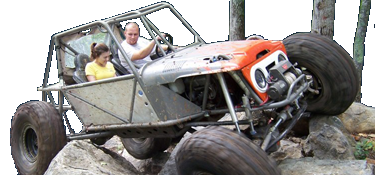How long does it take for an ORI to get too hot and not work correctly? Lets say I'm running the middle rock garden at Harlan and doing pretty well, I'm rushing the rocks, absorbing but slightly bouncing over them. I guess maybe 10-15 minutes working my way through. Would that over heat them or are we talking desert like running?
I think I'm swaying towards the ORI's from all that I've read here so far.
To guess a time amount would be difficult bc it varies with so much of that specific scenario.
Shocks take kinetic energy (travel) and transfer that to thermal energy( heat in oil) before they can dissipate that.
So the more travel the shock is doing, aka the more you are working the oil, the hotter it will get. On most shocks that are velocity sensitive, the faster the shock piston moves through the oil, and the more dampening the shock does, the more heat the oil is absorbing.
So on the streets, a few bumps here and there, but most of the time, the shock piston isn’t moving very much, while decent airflow around the shock body.
Now opposite of that, would be trying to do 40-60mph across 2’ y’all whoops.
Think: using all the travel available with the piston moving 20”/second. That can cook the shocks in a matter of minutes.
Most shock oils don’t really start breaking down until above 250°. “Fade” starts around 175-215 depending on the specific oil.
The hotter the oil, the thinner the viscosity, aka shock fade.
Air shocks extend when hot as the volume of n2/oil doesn’t change, but the temp increases the psi inside the shock. This increases the force applied trying to push the air shock shaft out of the body.
You see it as the ride height getting taller, and it “feels” more stiff.
Most of the time trail riding on the east coast, you won’t get the shocks hot enough to notice any of this.
You may get them warm to the touch (100-125°) if you are really working them, but that’s not really hot enough to change very much, other than the oil getting marginally thinner.
As far as ori’s. They have two n2 chambers that create opposition forces.
The upper chamber is the “spring force”,
The lower chamber opposes that.
So they both heat up the same, they generally increase the same-ish. Not technically the same, as the chambers aren’t the same size, but close enough that you notice that ori don’t behave like air shocks and pogo when hot.
I think the best thing for an ori would be to get them warm, and get the fluid thinner out a little.
Tuning the valving is like trying to find the location of a circle,
You know it exists, but you don’t know where.
Inside that circle, is the shock/suspension performing at 80%+ . That’s desirable.
Intersecting that circle, is a series of lines.
Each line represents slow, medium, and high speed compression and rebound valving, plus free bleed.
So you increase/ decrease each of these and note where they intersect each side of the circle.
Same with tuning a carb/guitar/piano, anything. Take it farther in each extreme, note better or worse. This plots a direction, but you don’t know magnitude, then keep going in that direction until you note a change, then reverse.
The more you tune, the more “points” you have that help plot the imaginary circle.
I need a drawing to help explain that one lol.





